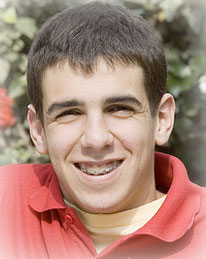About Orthodontics

- About Orthodontics
- Two-Phase Treatment
- For Children
- For Adults
- The Magic of Braces
- Ortho Dictionary
- Commonly Asked Questions
When Should I See an Orthodontist?
The American Association of Orthodontists recommends that a child’s first visit to an orthodontist take place by age seven, or earlier if a severe orthodontic problem is detected. Depending on the type of problem, the first visit could take place as early as age two or three. While treatment may not necessarily begin at this early age, early examination allows the orthodontist to detect and evaluate the problem and periodically check the child while the permanent teeth are erupting and the jaws and face continue to grow.
The following early warning signs may indicate that your child should have an orthodontic examination:
- Late loss of baby teeth
- A crossbite
- Finger- or lower lip-sucking habit
- Biting the cheek or biting into the roof of the mouth
- Jaws that protrude or retrude
- Facial imbalance
- Speech difficulties
- Missing teeth
- Crowded, misplaced, or blocked-out teeth
- Protruding teeth
- Deep bite or open bite
- Teeth that meet in an abnormal manner or don’t meet at all
- Tongue-thrust swallowing pattern
- Too much or too little room for the teeth
Early or preventive treatment may be initiated to prevent more serious problems from developing and to improve the existing problem. This limited treatment sometimes involves the use of fixed or removable appliances as well as space development and controlled guidance of the developing dentition. Early intervention frequently makes the completion of treatment at a later age easier and less time consuming.
Straight Talk
Usually, after all the permanent teeth have erupted, between ages eleven and fourteen, and it has been determined that braces are needed, brackets (braces) are then applied to all of the teeth. Today, modern brackets are very small and can be silver, gold-plated, or clear (tooth colored). Elastics, the small rubber bands that hold the wire to the brackets, now come in multiple colors from neon to pastels, a real plus for many children. Elastics can be changed to coordinate with outfits, to match school colors, or can be festive for holidays. Kids love them.
Another innovation in orthodontics is what is sometimes referred to as “Space Age” wires. These new wires, which have been developed through the NASA space program, are made from resilient metals which are more flexible and retain a preformed shape. Many of our “high tech” wires are actually activated by the temperature of the mouth.
We take pride in staying ahead of the curve with innovative high-tech advancements in orthodontic treatment such as the use of self-ligating brackets, molar distalizing appliances, and orthodontic implants for temporary anchorage devices (TADs), as well as in customizing our treatment for each patient so that our treatment is “problem driven” and not “appliance driven.”






